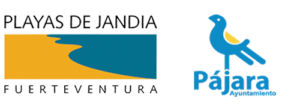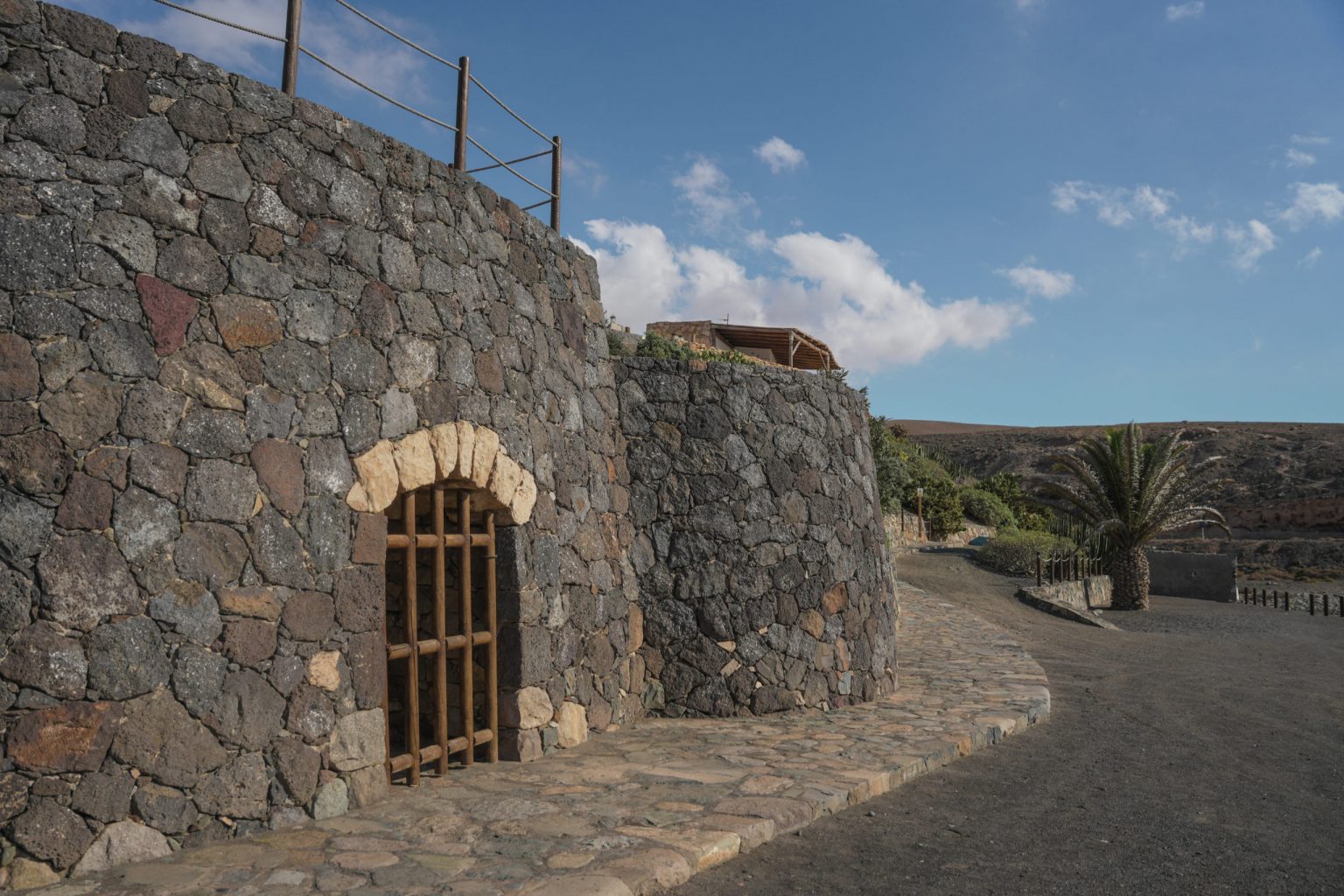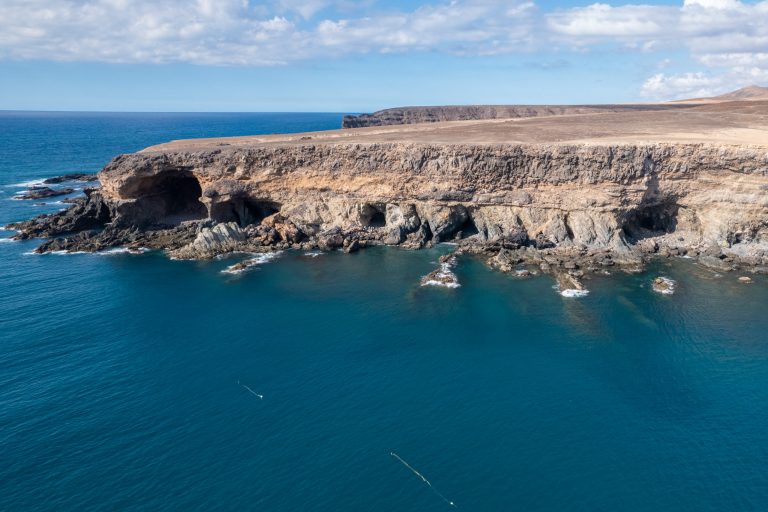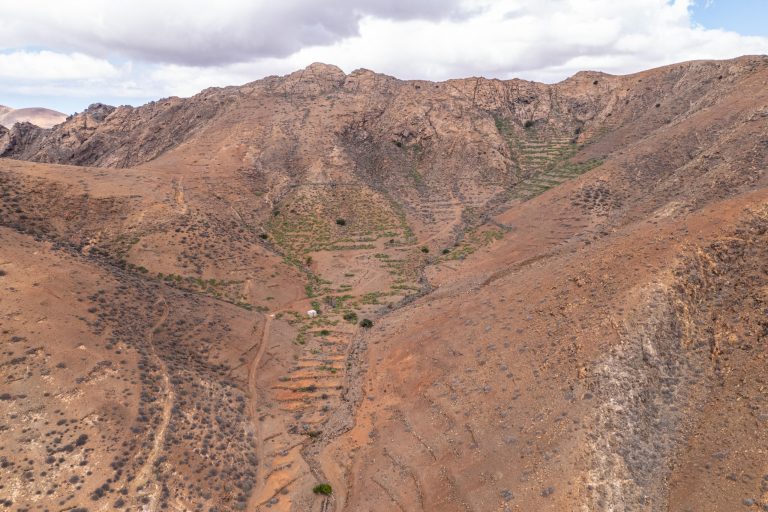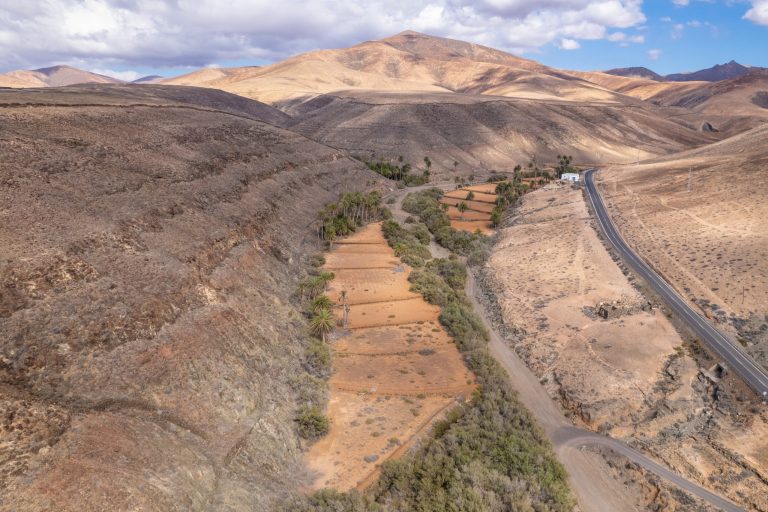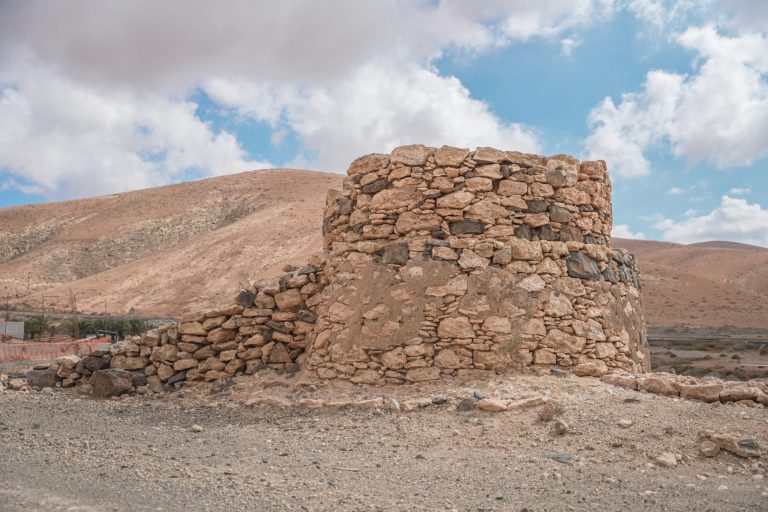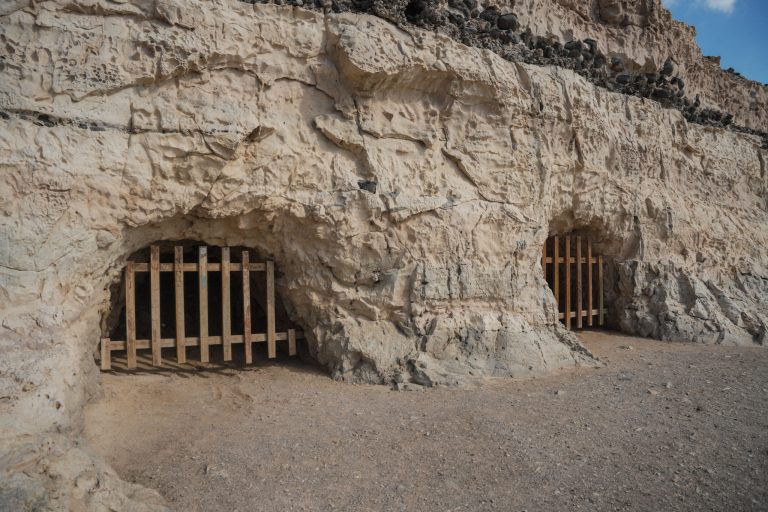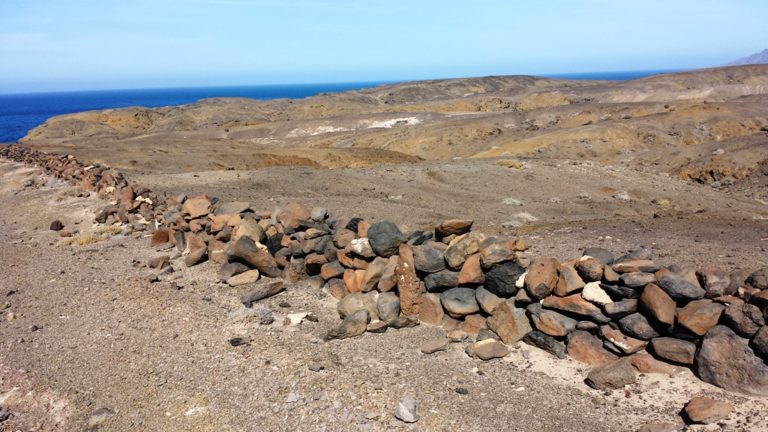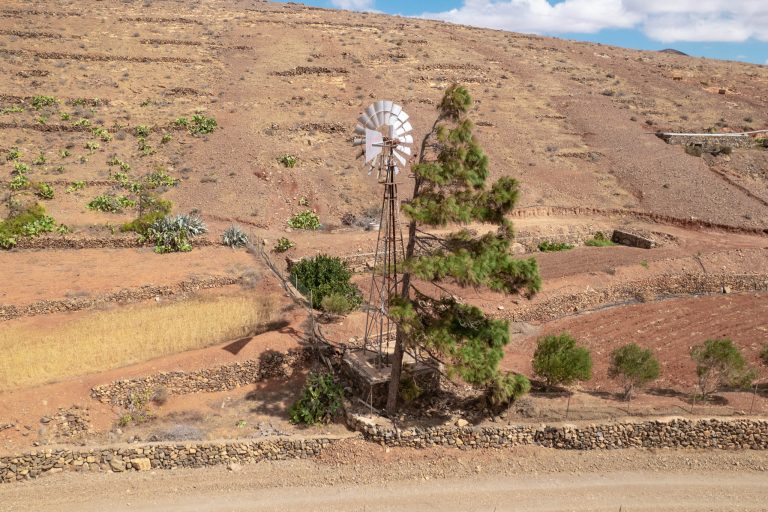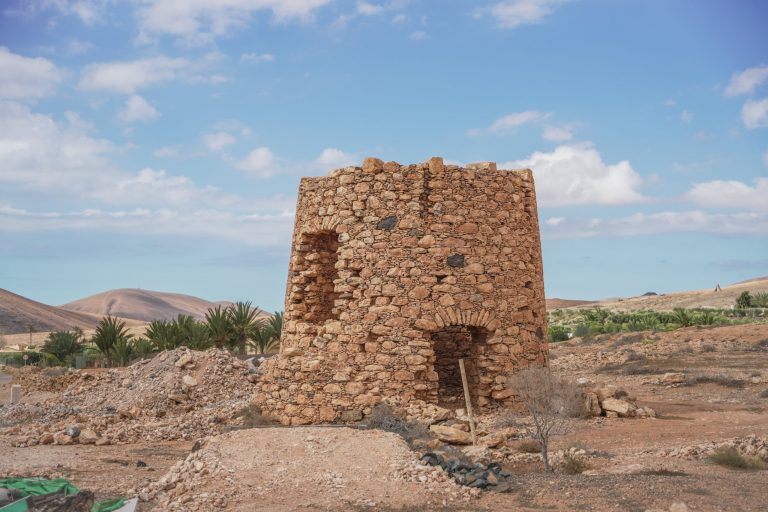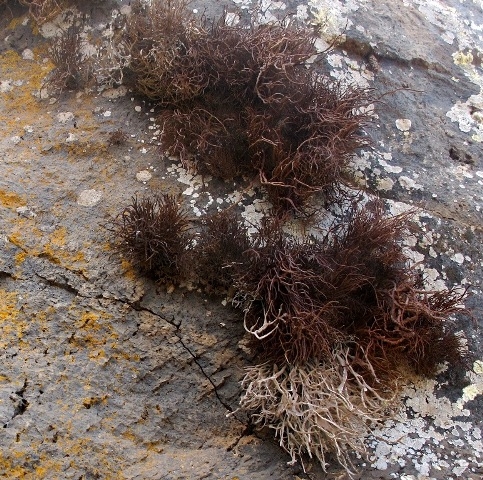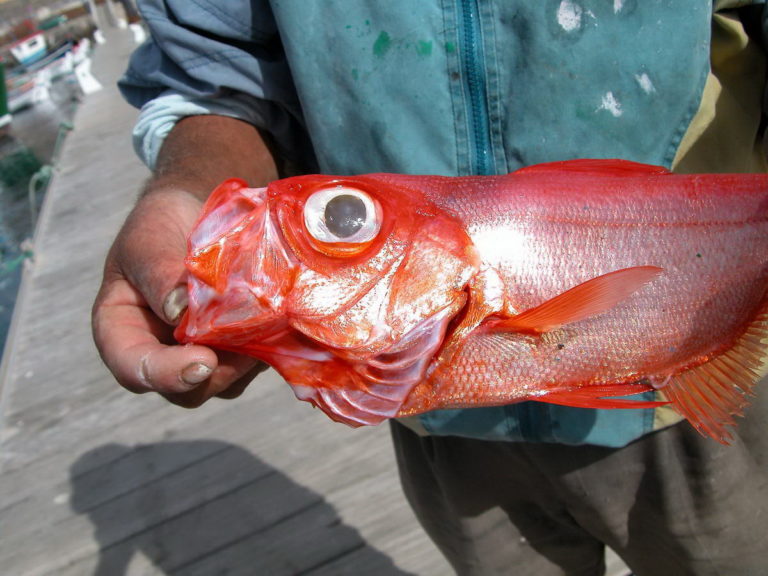The lime industry had its heyday in Fuerteventura from the 16th century until the middle of the 20th century, when it was replaced by cement. This material was widely used in construction and to whitewash (paint white) houses. For its manufacture, caliche (calcium carbonate, Ca³ Ca) was used, a thin but hard calcareous crust that covers the entire surface of the upper plains, whose slow combustion allows calcium oxide to be obtained. Its origin is that of soils covered by sand on which a rapid carbonation process took place in humid times.
Like most of these kilns, they are located near the coast to facilitate the loading of lime on ships and its transport to other islands.
These two ovens from Ajuy have the typical frustoconical shape with an opening at the top and a door at the bottom facing away from the prevailing winds to allow control of combustion. Huge quantities of firewood were necessary for its ignition and until the widespread use of coal in the mid-20th century, which partly explains the deforestation of Fuerteventura.
